

ท้องฟ้ายามค่ำคืนอยู่เสมอเป็นแหล่งที่มาของความน fascinasi, ความลึกลับ และการชี้นำสำหรับมนุษยชาติ ในสมัยโบราณ วัฒนธรรมต่าง ๆ ทั่วโลกได้พัฒนาความหมายและความเชื่อเกี่ยวกับวัตถุท้องฟ้าที่พวกเขาสังเกตเห็น ขณะที่ วัฒนธรรมญี่ปุ่น โดดเด่นเพราะการผสมผสานที่ไม่เหมือนใครของดาราศาสตร์ ตำนาน และค่านิยมทางวัฒนธรรม การศึกษาเกี่ยวกับดาราศาสตร์โบราณของญี่ปุ่นนำเสนอการดำดิ่งสู่ประวัติศาสตร์อันลึกซึ้งของประเทศ โดยแสดงให้เห็นว่าดาวฤกษ์ ฤดูกาล และเรื่องราวได้มีอิทธิพลต่อมรดกทางวัฒนธรรมของญี่ปุ่นอย่างไร
นักดาราศาสตร์ญี่ปุ่นโบราณได้สังเกตท้องฟ้าอย่างรอบคอบ ติดตามการเคลื่อนไหวของดวงอาทิตย์ ดวงจันทร์ และดาวฤกษ์ และบันทึกปรากฏการณ์ต่าง ๆ เช่น การเกิดสุริยุปราคาและอุกกาบาต ความสำคัญของวัตถุท้องฟ้าเหล่านี้มีมากกว่าความเป็นวิทยาศาสตร์ล้วน ๆ แต่เชื่อมโยงลึกซึ้งกับตำนานและค่านิยมทางสังคมของประเทศ ในตำนานกลุ่มดาวและเรื่องราวของดาวฤกษ์ วัตถุท้องฟ้าไม่เพียงแต่เป็นเครื่องช่วยในการนำทาง แต่ยังเป็นตัวแทนของค่านิยมและปัญญาทางวัฒนธรรม จากดาวสามดวงของกลุ่มดาวOrionที่รู้จักกันในชื่อ "Mitsu Boshi," ซึ่งเป็นสัญลักษณ์ของการเริ่มต้นการเพาะปลูกพืช ไปจนถึง Rigel และ Betelgeuse ที่มีความเคารพซึ่งสื่อถึงหน้าที่และความซื่อสัตย์ ดาราศาสตร์ญี่ปุ่นโบราณ เป็นการผสมผสานที่กลมกลืนกันระหว่างวิทยาศาสตร์ ตำนาน และมรดกทางวัฒนธรรม
รากฐานของดาราศาสตร์ญี่ปุ่นมีการเชื่อมโยงกับอิทธิพลจากจีนอย่างลึกซึ้ง Kazuhiko Miyajima ศาสตราจารย์จากมหาวิทยาลัย Doshisha กล่าวว่า ญี่ปุ่นได้รับอิทธิพลจากดาราศาสตร์และโหราศาสตร์จีนอย่างมีนัยสำคัญ อิทธิพลนี้ไม่ได้จำกัดแค่ในด้านวิทยาศาสตร์ แต่ยังขยายไปยังด้านวัฒนธรรม รูปแบบการเชื่อและบรรทัดฐานทางสังคม รวมถึงภาษา
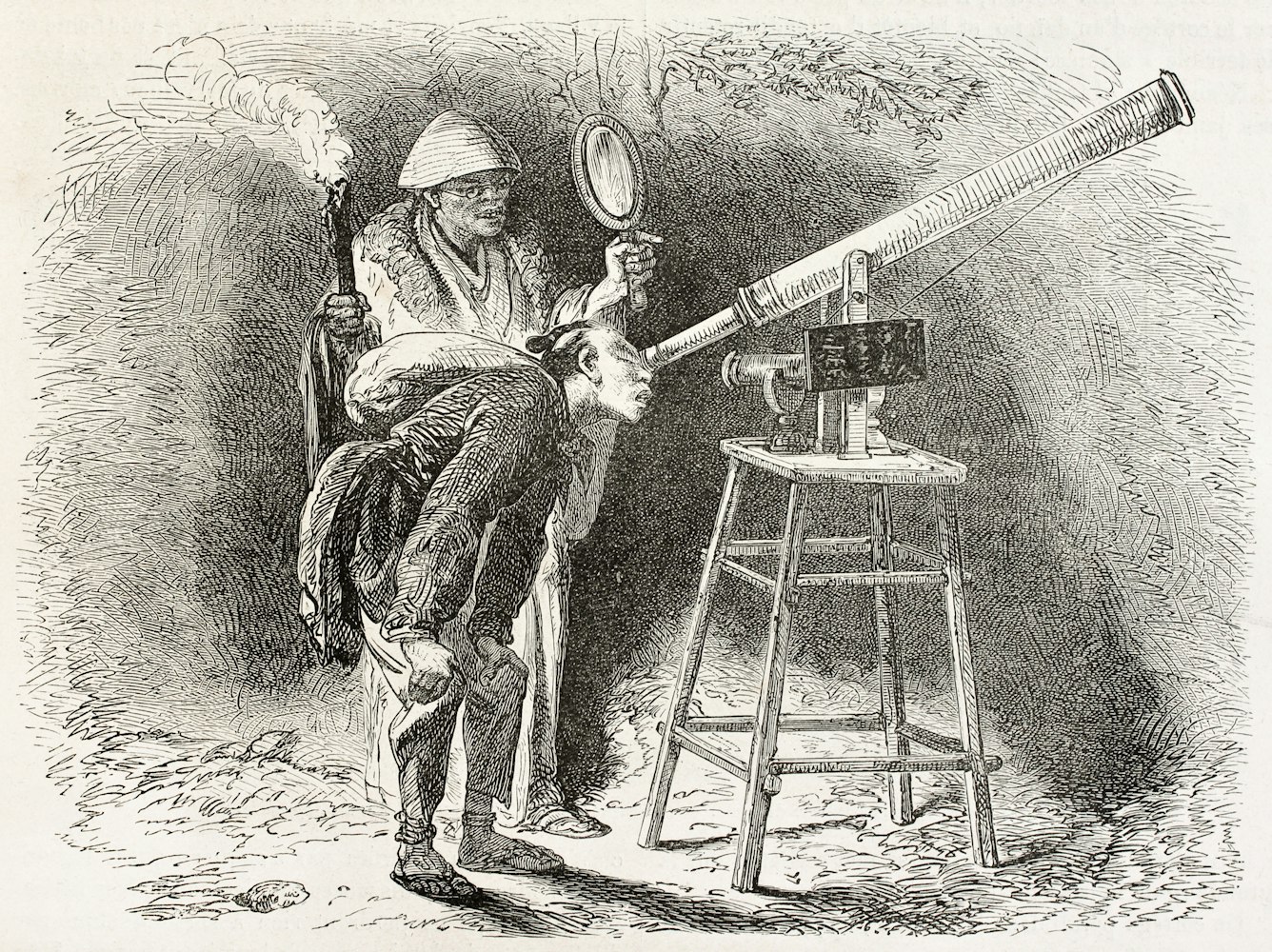
ในช่วงศตวรรษกลาง โดยเฉพาะราวศตวรรษที่แปด การแลกเปลี่ยนความคิดระหว่างจีนและญี่ปุ่นอยู่ในระดับสูงสุด ขงจื้อ การเขียนภาษาจีน คันจิ และวิธีการของจีนเกี่ยวกับดาราศาสตร์ล้วนแต่มีอิทธิพลในญี่ปุ่น ในความเป็นจริง พุทธศาสนา ซึ่งมีบทบาทสำคัญในการก่อรูปมรดกทางวัฒนธรรมของญี่ปุ่น ก็ถูกนำเข้ามาจากจีนในช่วงเวลานี้ การแลกเปลี่ยนข้ามวัฒนธรรมนี้ทำให้เกิดการเปลี่ยนแปลงอย่างมีนัยสำคัญในวิธีปฏิบัติทางดาราศาสตร์ของญี่ปุ่น ซึ่งถือเป็นจุดเปลี่ยนในประวัติศาสตร์ของประเทศ
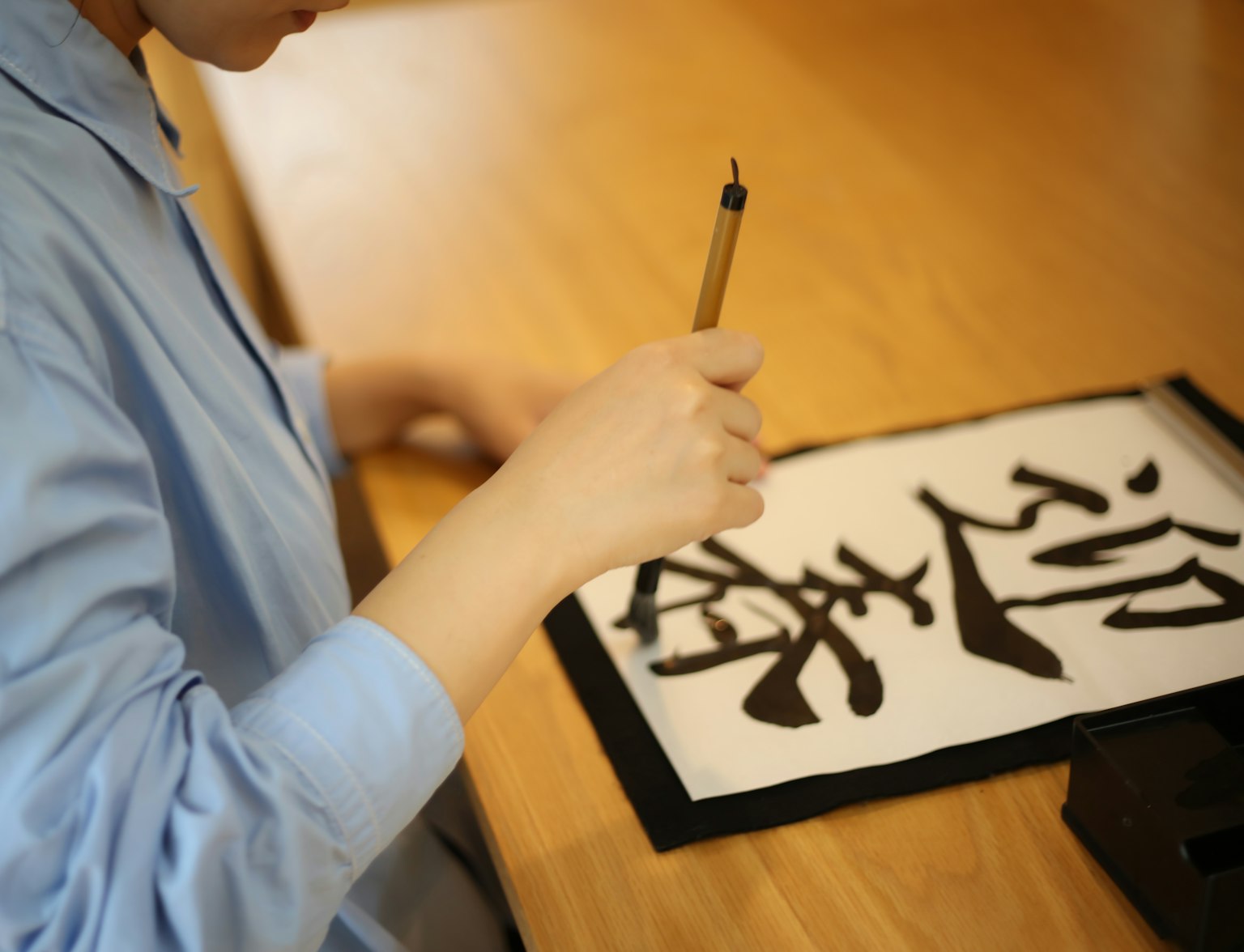
เรียนรู้วิธีการเขียนคันจิสำหรับ "ดาว"
แม้จะมีอิทธิพลจากจีนอย่างมีนัยสำคัญ แต่ญี่ปุ่นได้พัฒนาวิธีปฏิบัติและความเชื่อทางดาราศาสตร์ที่เป็นเอกลักษณ์ของตนเอง วิธีปฏิบัติดาราศาสตร์พื้นเมืองของญี่ปุ่นมีรากฐานที่ลึกซึ้งในตำนานและค่านิยมทางวัฒนธรรมของประเทศ วิธีปฏิบัติเหล่านี้ไม่ใช่แค่การสังเกตและการบันทึกข้อมูล แต่เป็นส่วนหนึ่งของโลกมนุษย์ที่มีอิทธิพลต่อหลายแง่มุมของชีวิต
วิธีปฏิบัติที่ไม่เหมือนใครคือการนับถือ "Mitsu Boshi" หรือ "ดาวสามดวง" ที่รู้จักกันในชื่อดาวสามดวงของกลุ่มดาว Orion ดาวเหล่านี้แสดงถึงการเริ่มต้นการเพาะปลูกพืช ซึ่งเป็นสัญลักษณ์ของความสัมพันธ์ที่กลมกลืนระหว่างโลกและจักรวาล ในทำนองเดียวกัน "Shichisei" หรือ "เจ็ดดาว" ก็ได้รับการเคารพเนื่องจากความสำคัญใน คำสอนของพุทธ. วิธีปฏิบัติเหล่านี้ แม้ว่าจะมีบันทึกการมีอิทธิพลจากจีน แต่ก็มีความเป็นญี่ปุ่นอย่างแท้จริง สะท้อนให้เห็นถึงมรดกทางวัฒนธรรมที่ร่ำรวยและมุมมองที่เป็นเอกลักษณ์ของประเทศ
ในผืนผ้าทอที่ซับซ้อนของตำนานญี่ปุ่น ดาวมีสถานที่ที่ไม่เหมือนใคร พวกมันไม่ใช่แค่วัตถุท้องฟ้าที่ยืนอยู่ห่างไกล แต่ถูกผูกพันอย่างลึกซึ้งในเนื้อผ้าของชีวิตประจำวัน ผู้คนญี่ปุ่นเชื่อว่าดาวได้แก่เอนทิตีศักดิ์สิทธิ์ที่ส่งสารเกี่ยวกับชีวิตและโชคชะตา ระบบความเชื่อนี้สะท้อนให้เห็นในคำว่า "Yowatashi Boshi" ซึ่งหมายถึงดาวเหล่านั้นที่มีบทบาทสำคัญในชีวิตของพลเมืองทั่วไป
ดาวยังมีบทบาทสำคัญในราชสำนักญี่ปุ่น นักพยากรณ์ในราชสำนักมักจะตีความการเคลื่อนไหวและตำแหน่งของดาวเพื่อคาดการณ์เหตุการณ์ในอนาคตหรือตีความสิ่งที่เกิดขึ้นในปัจจุบัน การตีความของพวกเขาซึ่งอิงจากการรวมกันของดาราศาสตร์และตำนานมีอิทธิพลต่อการตัดสินใจของราชสำนัก การผสมผสานกันของวิทยาศาสตร์และตำนานนี้เป็นส่วนสำคัญของมรดกทางวัฒนธรรมของญี่ปุ่น ซึ่งนำเสนอภาพที่น่าสนใจเกี่ยวกับมุมมองโบราณของประเทศ
ดาราศาสตร์ญี่ปุ่นได้ระบุจำนวนกลุ่มดาวซึ่งแต่ละกลุ่มต่างก็มีความสำคัญเฉพาะตัว ตัวอย่างเช่น กลุ่มดาวLyra ที่มีดาวหลักคือ Vega และกลุ่มดาวAquila ที่มีดาวหลักคือ Altair ได้รับความโดดเด่นในช่วงเวลาที่กำหนดในปี ตำแหน่งของกลุ่มดาวเหล่านี้ในท้องฟ้าสามารถใช้ในการบันทึกฤดูกาลและเวลา
อีกกลุ่มดาวที่น่าสนใจก็คือOrion ซึ่งในญี่ปุ่นเรียกว่า "Tsuzumi Boshi" หรือดาวกลอง กลุ่มดาวนี้ถูกมองว่าเป็นกลองซึ่งเป็นสัญลักษณ์ที่เกี่ยวข้องกับการเฉลิมฉลองและความสุขในวัฒนธรรมญี่ปุ่น ในทำนองเดียวกัน กลุ่มดาวPleiades ที่รู้จักกันในญี่ปุ่นชื่อ "Subaru" ได้รับความเคารพเนื่องจากความงามและความสว่าง ความสำคัญเฉพาะตัวของกลุ่มดาวแต่ละกลุ่มกับสัญลักษณ์ของพวกมัน ได้รับการเพิ่มเติมด้วยการถักทอสภาพแวดล้อมทางดาราศาสตร์ที่หลากหลายของญี่ปุ่นโบราณ
ในญี่ปุ่นโบราณ ปฏิทินจันทรคติมีบทบาทอย่างมีนัยสำคัญในการจัดการเวลาและการทำเครื่องหมายเหตุการณ์สำคัญ ระบบปฏิทินนี้มีความเชื่อมโยงอย่างลึกซึ้งกับดาราศาสตร์ญี่ปุ่น ปฏิทินจันทรคติแตกต่างจากปฏิทินสุริยคติที่เรารู้จักในปัจจุบัน โดยอิงจากระยะของดวงจันทร์ เดือนใหม่จะเริ่มต้นด้วยพระจันทร์ใหม่ และพระจันทร์เต็มดวงจะเป็นเครื่องหมายกลางเดือน
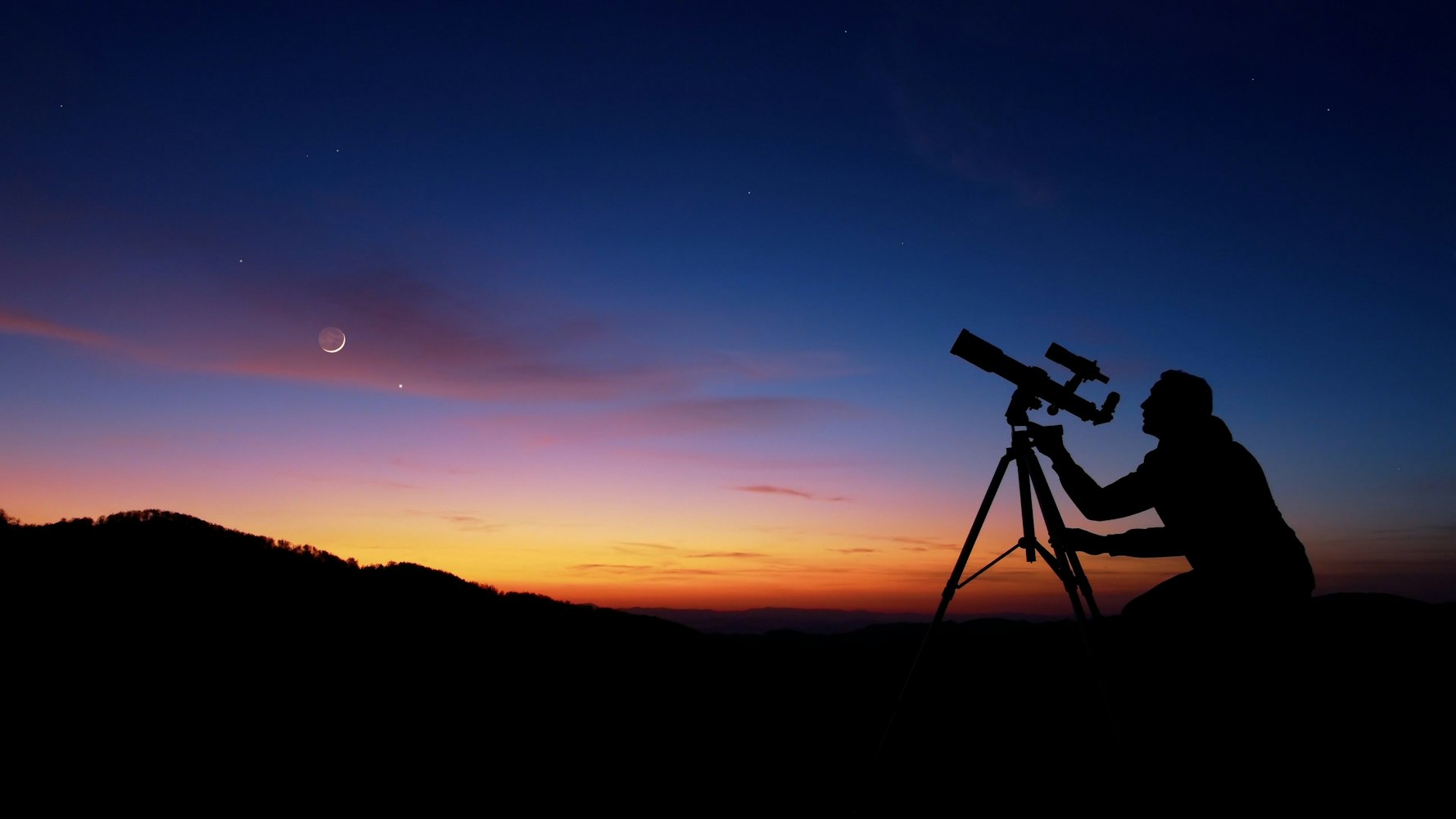
ปฏิทินจันทรคติได้มีอิทธิพลอย่างลึกซึ้งต่อวัฒนธรรมและชีวิตประจำวันในญี่ปุ่น ตัวอย่างเช่น เทศกาลดั้งเดิมหลายรายการในญี่ปุ่นยังคงเฉลิมฉลองตามปฏิทินจันทรคติอยู่ พระจันทร์ยังมีบทบาทสำคัญในการเกษตร เพราะการปลูกและการเก็บเกี่ยวมักถูกกำหนดตามระยะของดวงจันทร์ ในแง่นี้ ปฏิทินจันทรคติถือเป็นสะพานที่สำคัญระหว่างสวรรค์และโลก เชื่อมโยงจังหวะของวัตถุท้องฟ้ากับกิจกรรมของมนุษย์
การสังเกตตามฤดูกาลในญี่ปุ่นมีรากฐานลึกซึ้งในด้านดาราศาสตร์ หลาย ๆ การสังเกตเหล่านี้เกี่ยวข้องกับการดูดาว ซึ่งสะท้อนถึงมรดกทางดาราศาสตร์ที่ร่ำรวยของประเทศ เทศกาลแห่งหนึ่งคือTanabata หรือที่เรียกว่าเทศกาลดาว ซึ่งเฉลิมฉลองในเดือนที่เจ็ดของปฏิทินจันทรคติ โดยนำไปตามตำนานที่เกี่ยวข้องกับดาวVega และAltair ตามตำนานนี้ ดาวทั้งสองดวงซึ่งเป็นสัญลักษณ์ของความรัก ได้รับอนุญาตให้พบกันเพียงปีละครั้งในวันที่เจ็ดของเดือนจันทรที่เจ็ด
การสังเกตที่สำคัญอีกประการคือTsukimi หรือเทศกาลชมเดือน จัดขึ้นในฤดูใบไม้ร่วง คอยเฉลิมฉลองความงามของพระจันทร์เต็มดวงและให้โอกาสในการชื่นชมท้องฟ้ายามค่ำคืน การสังเกตตามฤดูกาลและเทศกาลเหล่านี้ไม่เพียงแต่เน้นถึงความสำคัญทางวัฒนธรรมของดาราศาสตร์ในญี่ปุ่น แต่ยังเตือนเราถึงสายใยอันไม่สิ้นสุดระหว่างมนุษย์และจักรวาล
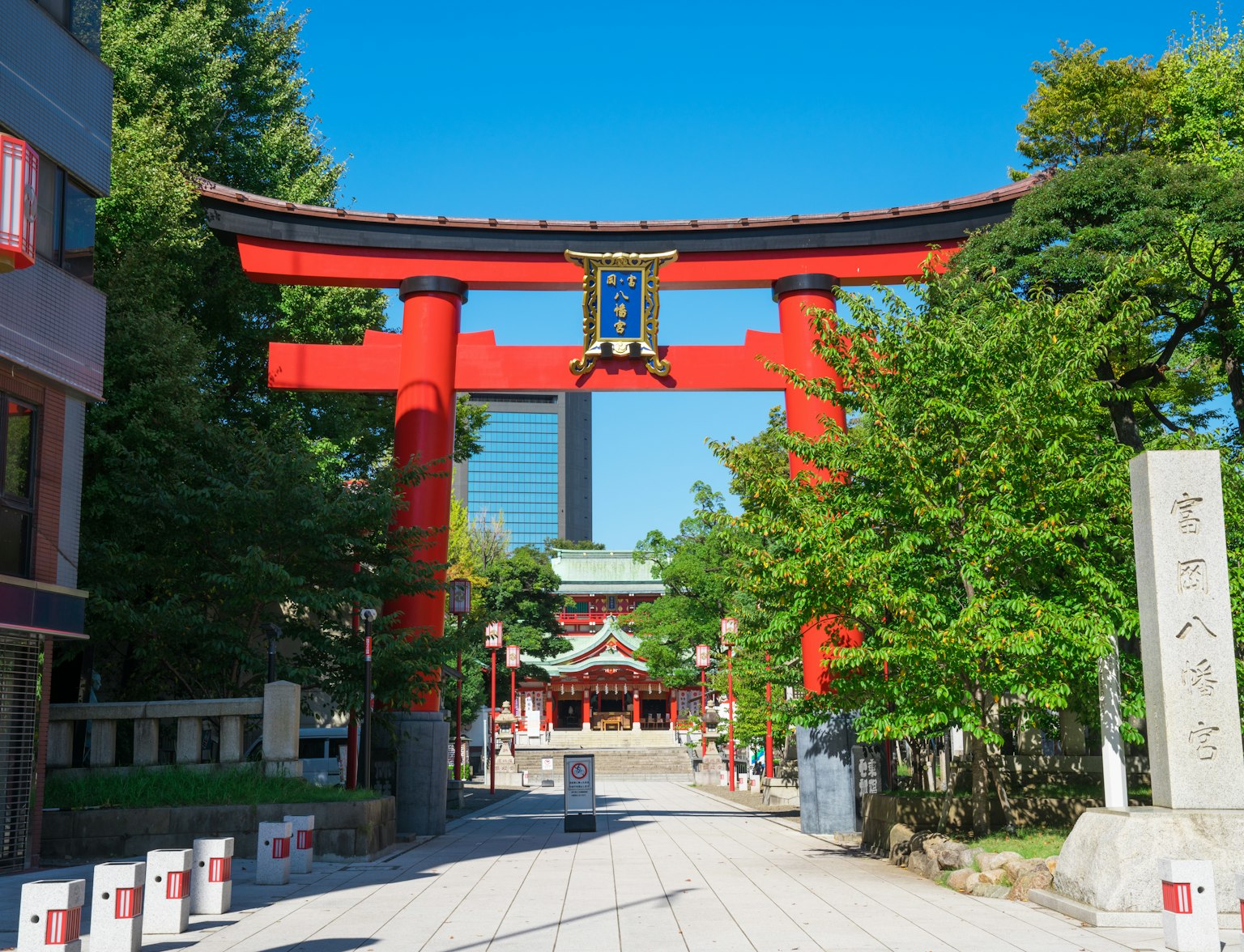
ชมการจัดแสดง Edo Tanabata ที่พิพิธภัณฑ์เอโดะฟูกากะวะ
ในประวัติศาสตร์อันหลากหลายของญี่ปุ่น เครื่องมือทางดาราศาสตร์โบราณมีสถานที่เฉพาะ มันเป็นเครื่องมือที่ได้รับอิทธิพลจากเทคโนโลยีของจีนและดัตช์ ซึ่งมีบทบาทสำคัญในการสังเกตและการคำนวณปฏิทิน
ตัวอย่างเช่น octants และ sextants ซึ่งถูกนำเข้าสู่ญี่ปุ่นโดยชาวดัตช์ เป็นเครื่องมือที่จำเป็นสำหรับดาราศาสตร์ญี่ปุ่น เครื่องมือพกพาเหล่านี้ถูกใช้ในการวัดมุมระหว่างวัตถุที่มองเห็นได้สองชิ้น ช่วยในการนำทางและการจับภาพท้องฟ้ายามคืน อีกเครื่องมือที่สำคัญคือดาวโลก ซึ่งน้อยกว่าที่ใช้กันในเครื่องมือทางดาราศาสตร์เอเชียส่วนใหญ่ แต่มีฟังก์ชันที่สูง เครื่องมือเหล่านี้แสดงภาพของท้องฟ้าและถูกใช้ในการระบุและศึกษาเกี่ยวกับกลุ่มดาว
วิวัฒนาการของเครื่องมือทางดาราศาสตร์ในญี่ปุ่นเป็นการเดินทางที่น่าสนใจ สะท้อนถึงความก้าวหน้าทางวิทยาศาสตร์ของประเทศในช่วงหลายศตวรรษ จากเครื่องมือที่เรียบง่าย นักดาราศาสตร์ญี่ปุ่นเริ่มเข้าถึงเครื่องมือที่ซับซ้อนยิ่งขึ้น ผนวกการนำเข้าเทคโนโลยีจากต่างประเทศพร้อมกับการพัฒนานวัตกรรมพื้นบ้าน
Observatory Asakusa ตัวอย่าง ได้เริ่มทำการสังเกตท้องฟ้าอย่างต่อเนื่องและเป็นระบบในปี 1782 ภายใต้การนำของนักดาราศาสตร์ที่ได้รับการแต่งตั้ง ซึ่งถือเป็นการก้าวกระโดดครั้งสำคัญในความสามารถทางดาราศาสตร์ของญี่ปุ่น ต่อมา เครื่องมือ Repsold Transit ซึ่งมีประวัติยาวกว่า 130 ปี ได้กลายเป็นเครื่องมือพื้นฐานที่มีบทบาทสำคัญในประวัติศาสตร์ดาราศาสตร์ของญี่ปุ่น
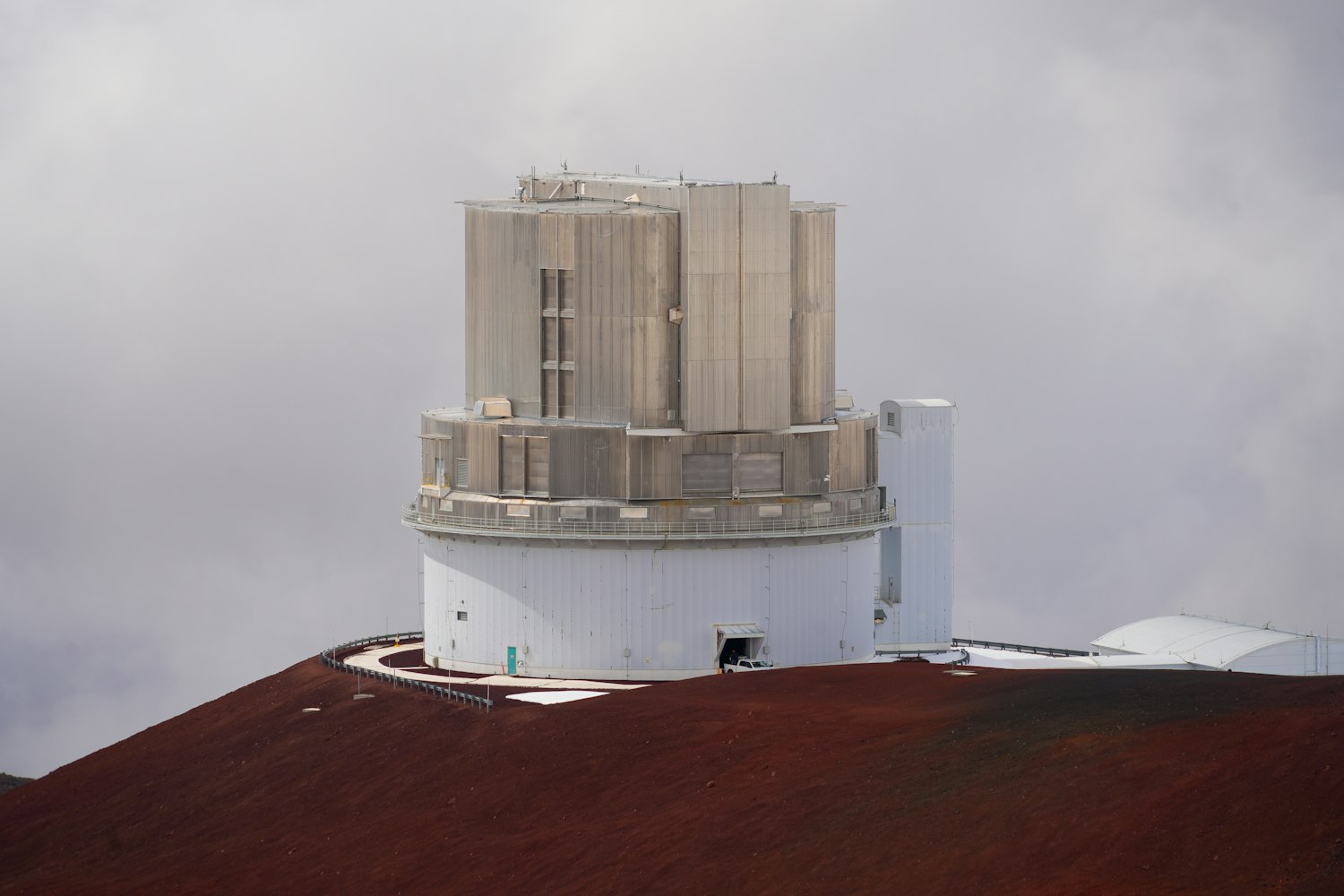
จากจุดเริ่มต้นนี้ ดาราศาสตร์ญี่ปุ่นก้าวมาไกล วันนี้ ญี่ปุ่นเป็นผู้นำในด้านนี้โดยมีเครื่องมือขั้นสูง เช่น กล้องโทรทรรศน์ Subaru และโทรศัพท์เคลื่อนที่เคปเลอร์ แต่ถึงแม้พวกเขาจะขยายขอบเขตของความรู้ นักดาราศาสตร์ญี่ปุ่นสมัยใหม่ยังคงให้เกียรติแก่ประวัติศาสตร์ของพวกเขา โดยรักษาเครื่องมือโบราณที่ทำให้จุดเริ่มต้นของการเดินทางของพวกเขา
ดาราศาสตร์มีบทบาทสำคัญในประวัติศาสตร์ของญี่ปุ่น โดยมีอิทธิพลต่อทั้งตำนาน นิทานพื้นบ้านและวิธีปฏิบัติทางวัฒนธรรม ปรากฏการณ์ทางดาราศาสตร์และวัตถุท้องฟ้าถูกร้อยเรียงเข้ากับตำนานและเรื่องราวต่าง ๆ ของประเทศเสมอ เป็นสัญลักษณ์สำคัญหรือส่วนที่ปรากฏในเรื่องเล่า
ตัวอย่างเช่น เทศกาลTanabata ซึ่งเราได้กล่าวถึงก่อนหน้านี้ มีรากฐานลึกซึ้งในตำนานดาวที่เกี่ยวข้องกับดาวVega และAltair ในทำนองเดียวกัน กลุ่มดาวPleiades ที่รู้จักกันในญี่ปุ่นชื่อSubaru ได้สร้างอิทธิพลให้กับวัฒนธรรมของญี่ปุ่น กลุ่มดาวSubaru ไม่เพียงแต่มีผลกระทบต่อเทศกาลและนิทานพื้นบ้าน แต่ก็ยังพบว่ามีอิทธิพลในแบรนด์ทันสมัย เช่น ในบริษัทผู้ผลิตรถยนต์ชื่อดังSubaru
อ่านเพิ่มเติม: ตำนานที่น่าสนใจของญี่ปุ่น: เทพเจ้า โยไค และเรื่องราวพื้นเมือง
ดาราศาสตร์มีอิทธิพลอย่างลึกซึ้งต่อ วรรณกรรมและศิลปะญี่ปุ่นโบราณ, ซึ่งได้มีบทบาทสำคัญในการสร้างเรื่องราวและรูปแบบที่กำหนดความเป็นวัฒนธรรมเหล่านี้ ร่างกายท้องฟ้าและการเคลื่อนไหวของพวกมันไม่ใช่แค่ปรากฏการณ์ทางวิทยาศาสตร์ แต่เป็นแหล่งแห่งแรงบันดาลใจ สัญลักษณ์แห่งความจริงอันลึกซึ้ง และยานพาหนะในการแสดงออกถึงอารมณ์และประสบการณ์ของมนุษย์
ตัวอย่างเช่น ในManyoshu ซึ่งเป็นการรวบรวมบทกวีญี่ปุ่นที่เก่าแก่ที่สุด มีการอ้างอิงหลายครั้งถึงดวงจันทร์ ดาว และปรากฏการณ์ท้องฟ้าอื่น ๆ องค์ประกอบทางดาราศาสตร์เหล่านี้ถูกใช้เป็นเชิงอุปมาในการสำรวจหัวข้อแบบรัก การเปลี่ยนผ่าน และการผ่านเวลา ในทำนองเดียวกัน ในศิลปะญี่ปุ่นดั้งเดิม ธีมทางดาราศาสตร์ก็มีความเด่น จากหน้าจอที่เต็มไปด้วยดาวไปจนถึงทัศนียภาพที่มีแสงเดือน การทำงานศิลปะเหล่านี้สะท้อนให้เห็นถึงความหลงใหลและความเคารพต่อจักรวาลที่ทำให้วัฒนธรรมญี่ปุ่นโบราณมีชีวิตชีวา

เยี่ยมชมเกาะนาโอชิมะ ประเทศญี่ปุ่น เจ้าผู้ลับแห่งศิลปะสมัยใหม่
อิทธิพลของดาราศาสตร์ต่อวัฒนธรรมโบราณของญี่ปุ่นมีความชัดเจนมากที่สุดในด้านศาสนา ทั้งศาสนาชินโตและพุทธศาสนา ซึ่งเป็นสองประเพณีทางศาสนาที่โดดเด่นในญี่ปุ่น มีการอ้างอิงหลายประการที่เกี่ยวข้องกับวัตถุและปรากฏการณ์ท้องฟ้าในศาสนาชินโต ศาสนาพื้นเมืองของญี่ปุ่น พระอาทิตย์อุทัย Amaterasu เป็นบุคคลสำคัญ การเกิดขึ้นของเธอจากถ้ำเป็นการเฉลิมฉลองในวันเหมายัน สะท้อนถึงการรวมตัวกันระหว่างปรากฏการณ์ทางดาราศาสตร์ในเรื่องราวทางศาสนา พุทธศาสนาซึ่งถูกนำเข้าจากทวีปเอเชีย ยังได้บูรณาการองค์ประกอบทางดาราศาสตร์ แบบจำลองจักรวาลของพุทธศาสนาเป็นตัวอย่าง รวมถึงการอธิบายโดยละเอียดเกี่ยวกับสวรรค์และโลกทางทวีป
นอกจากนี้ ดาราศาสตร์ยังมีบทบาทสำคัญในปฏิทินทางศาสนา การสังเกตท้องฟ้าถูกใช้ในการกำหนดวันที่ของเทศกาลและพิธีกรรมทางศาสนา การรวมกลุ่มทางดาราศาสตร์เข้ากับกรอบศาสนาแสดงให้เห็นว่ามันมีความสำคัญในวัฒนธรรมโบราณของญี่ปุ่น

ความคิดสุดท้าย
อย่างที่เราได้ค้นพบแล้ว อิทธิพลของดาราศาสตร์ต่อวัฒนธรรมโบราณของญี่ปุ่นมีทั้งลึกซึ้งและกว้างขวาง จากเรื่องเล่าในวรรณกรรมและศิลปะ ไปจนถึงพิธีกรรมของศาสนาชินโตและพุทธศาสนา วัตถุและปรากฏการณ์ทางดาราศาสตร์มีบทบาทสำคัญในการสร้างมรดกทางวัฒนธรรมของประเทศ ความหลงใหลในจักรวาลนี้ได้ทิ้งร่องรอยที่ไม่อาจลืมเลือน สร้างผลกระทบทั้งในอดีตและปัจจุบัน ซึ่งสามารถพบเห็นได้จากความนิยมที่ยังคงอยู่ของการดูดาวในประเทศนี้
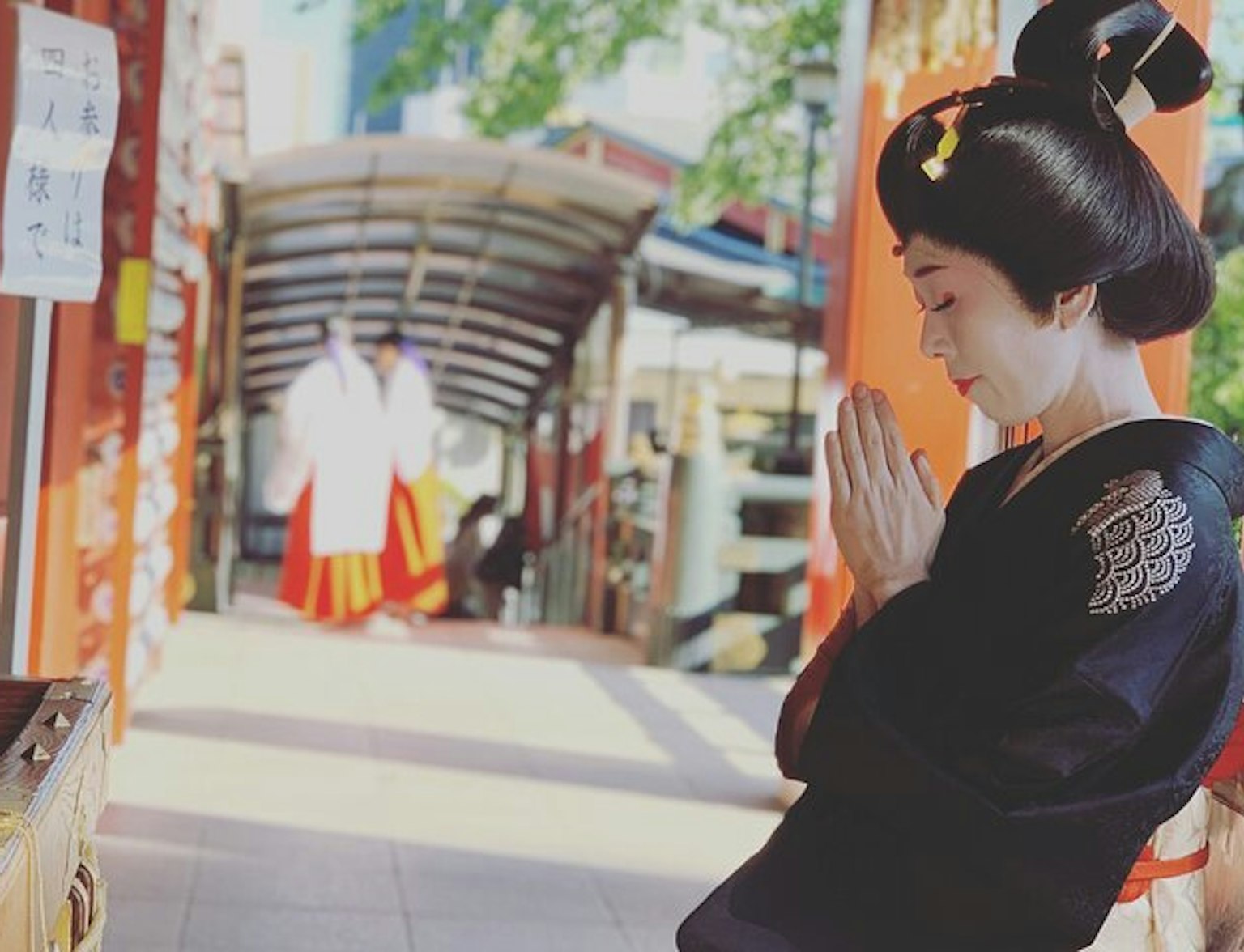
เรียนรู้เพิ่มเติมเกี่ยวกับการปฏิบัติชินโตกับทัวร์นี้
โตเกียว
ไปจนถึงหมู่บ้าน Asuka ที่เงียบสงบ ไม่ว่าคุณจะเป็นผู้สนใจทางดาราศาสตร์หรือนักประวัติศาสตร์ ทัวร์เหล่านี้มอบโอกาสที่ไม่เหมือนใครในการสัมผัสอดีตและปัจจุบันของญี่ปุ่นผ่านเลนส์ของตำนานทางดาราศาสตร์ของมัน embark on this exciting journey with us - visit our website today and start planning your trip to this incredible country.to the peaceful Asuka village.
Whether you're an astronomy enthusiast or a history buff, these tours offer a unique opportunity to experience Japan's past and present through the lens of its celestial lore. Embark on this exciting journey with us - visit our website today and start planning your trip to this incredible country.



